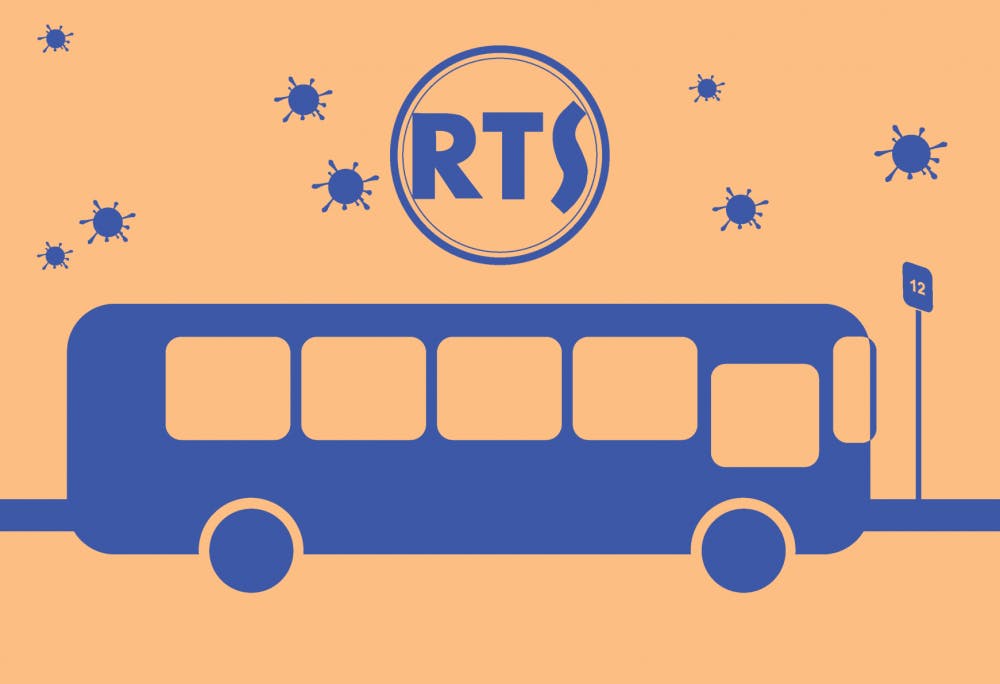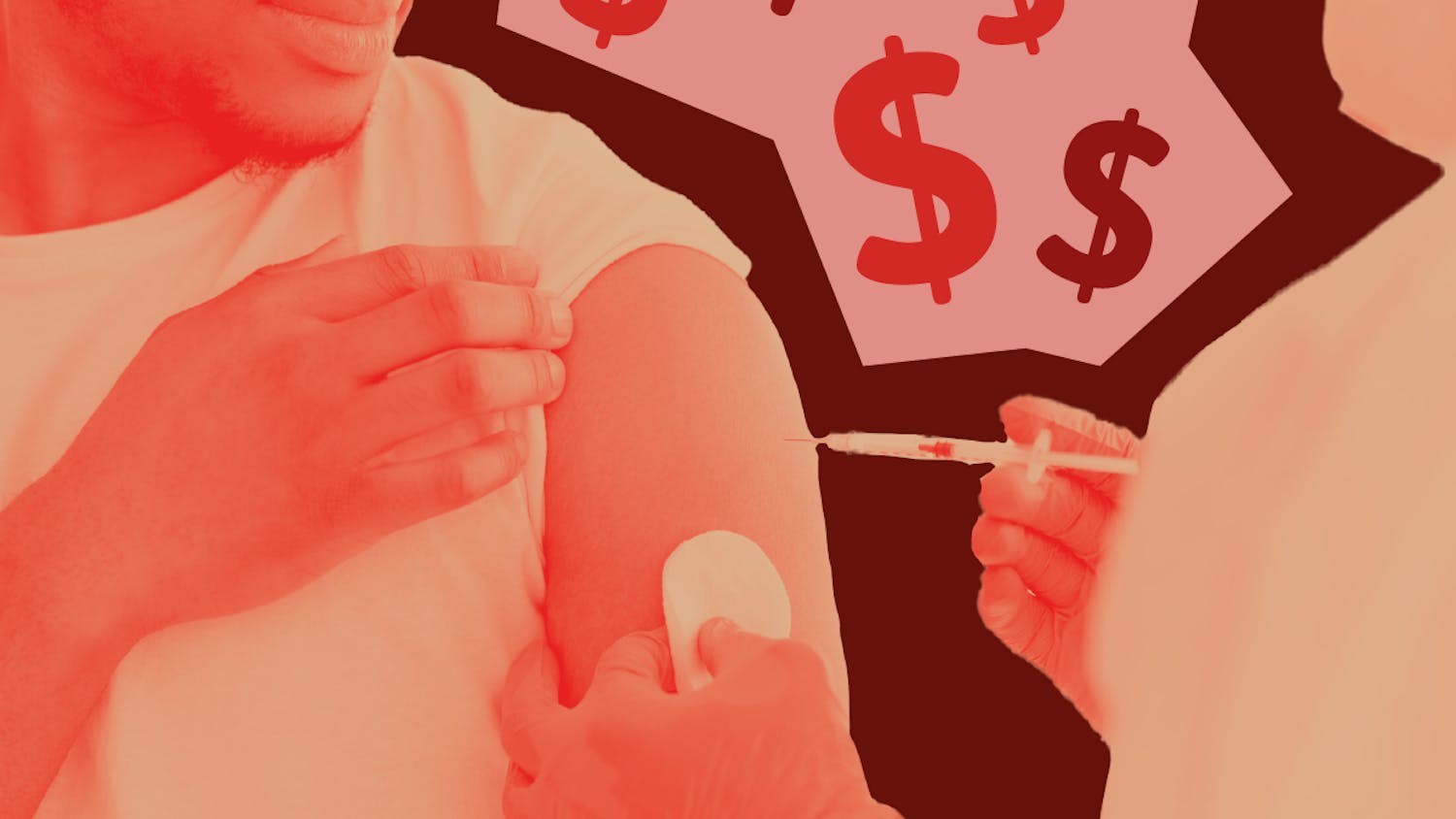
Reduced capacity could lead to longer wait times and delays for passengers, but UF is still evaluating how to provide an efficient service.
Students can expect longer wait times for the bus this Fall as UF rolls out its reopening plan. Masks are required, too.
RTS buses can transport a maximum of 60 passengers per bus, but in the Fall, buses will likely be reduced to a 20 passenger capacity, said Scott Fox, the senior director of UF Transportation and Parking Services. Campus Connector shuttles, a shuttle service for faculty, staff and students, will be reduced to 33 percent capacity, meaning that only seven passengers will be able to ride at one time.
Reduced capacity could lead to longer wait times and delays for passengers, but Fox said they are still evaluating how to provide an efficient service in light of these changes.
“It's the toughest question of the day,” Fox said. “We would need triple the buses and triple the drivers in order to provide the same level of service, and we would triple the money to pay for it. We don't have triple the money. RTS does not have triple the drivers.”
Fox said one option includes eliminating RTS routes with low ridership, to provide for more high traffic areas. The change will depend on ride demand come August, but Fox said it is not definite. New routes will be created for the shuttle system, which will be announced at the start of the Fall semester.
Different trips with similar routes on TAPS services used to be combined in the past, but those trips will no longer be joined in order to limit contact between passengers, Fox said. While Fox said he is not sure of how demand will be for the Student Nighttime Auxiliary Patrol (SNAP) rides, he said groups who come together will be allowed to ride together — but they won't be mixing groups.
“We're not completely sure what to expect,” Fox said. “We don't know whether it will be business as usual in the Fall. We recognize that in this COVID-19 climate, transit riders all over the world are concerned for their personal safety.”
Drivers, maintenance workers and passengers will also be required to wear masks while onboard UF TAPS vehicles, including RTS buses and SNAP, Fox said.
Maria Dozier lives off-campus and usually takes a 20 minute bus ride at the beginning and end of each day.
But come Fall, the 20-year-old UF sustainability and the built environment senior said she was concerned about the added risk coming in contact with the virus on the bus. Her route is one with typically high traffic and she said she can see a lot of students facing a lack of access to bus rides.
“It's unfortunate that a lot of students will have to decide on whether they can get the class or be safe,” Dozier said.
Dozier said she will probably drive to school on her scooter instead, but other students don’t have alternative methods of transportation and depend on the bus. In addition, with more people choosing to drive on their own, she said she is worried about parking on-campus being strained.
When UF released its Fall plan Friday, few students remained with in-person classes, but Dozier said class isn’t the only reason why students choose to go on campus.
“A lot of people might not have access to good internet connection where they are, so they go to campus to use the library,” Dozier said. “Or they may not have access to healthy food right and so they might rely on the bus to get there.”
To ensure the safety of drivers and passengers, TAPS will provide drivers gloves, hand sanitizer and other cleaning products at all times and plexiglas barriers have been installed in all vehicles to divide the driver and passengers areas, according Hessy Fernandez, UF director of issues management and crisis communications.
Surfaces that are frequently touched, such as door handles, armrests, seat belts and buckles will be cleaned and sanitized every half hour on Campus Connector shuttles and after every trip on Campus Cabs and Gator Lift vehicles, she wrote in an email to The Alligator. At the end of the day, the inside of each vehicle will be cleaned, as well. According to Fox, RTS buses will be cleaned periodically throughout the day and then again more thoroughly at the end of each day.
Fox said they are currently working out all possible scenarios for transportation capacity in the Fall, which will depend on how the pandemic develops.
“It's really a tough time,” Fox said. “The answer is, here's our menu: it could be scenario A, it could be scenario B, it could be scenario C. I think most of all, we probably want our riders to know that we're acutely aware that we need to remain flexible.”
Nevertheless, the plan is guaranteed to involve cleaning procedures and mask wearing on all services, Fox said. Students who aren’t wearing masks, he added, will not be allowed to ride in the university’s transportation services.
RTS Marketing and Communications Specialist Thomas Idoyaga said the buses will have mask dispensers for any passenger who does not have a mask on hand, free of charge.
To enforce mask wearing on their vehicles, Idoyaga said they are implementing a social media campaign to make people aware of the new policy. They have also put up signs on all buses asking for passengers to wear them while riding, he added.
They are also asking that passengers enter through the buses’ back entrance, to protect drivers from potential contact with the virus.
COVID-19 transmission can occur through direct, indirect or close contact with an infected person’s respiratory droplets, which are released when a person talks, sings, coughs or sneezes, according to the World Health Organization. The droplets can reach a susceptible person’s eyes, mouth or nose, which can result in infection. This is more likely in indoor areas with poor ventilation.
Idoyaga said they will enforce mask wearing while passengers wait at the bus stop as well. As large crowds typically gather at high-traffic stops, they will also be putting signs asking people to remain distanced while waiting. But more regulation, he said, will also depend on the ridership demand in the Fall.
Once ridership numbers are made more clear, changes in routes will be determined as necessary, Idoyaga said. If low rider routes are removed, he added, adjustments will be made to ensure students have a means of transportation. But for the first day of the Fall semester, all routes will remain the same.
“There's no easy answer,” Idoyaga said. “However we start the service August 31, it may look different September 31.”





